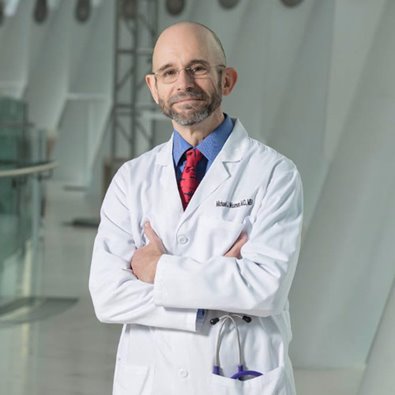Before Michael J. Waxman, MBA, MD, FCCM, heads out to teach an FCCS course, he goes into his attic, where his simulation and teaching equipment is stored. He selects what he needs among the mannequins, defibrillators, ventilators, and other supplies, packs it all into his car, and hits the road.
Dr. Waxman first began teaching FCCS courses in 2008. Since then, his course calendar, love of teaching—and supply of mannequins—has exploded. Fifteen years ago, Dr. Waxman was director of the intensive care units (ICUs) at a hospital in the Kansas City area when a nurse asked if he would consider becoming an FCCS course director to teach the courses locally. So he took SCCM’s two-day FCCS course and then began teaching it, soon offering it three or four times a year. “I didn’t have the backing of any university or hospital,” Dr. Waxman said. “I would look to various places that I had relationships with, ask the hospitals to see if I could borrow some space, and then I would advertise both locally and nationally.”

Photo courtesy of Michael J. Waxman. |
His FCCS courses were placed on the SCCM calendar, so learners would fly into Kansas City from Alaska to Florida, from Maine to Hawaii. He expanded his role to become an FCCS consultant to train others how to teach the courses. He was still primarily teaching the two-day course in person locally four times a year when the COVID-19 pandemic began in March 2020. “What am I going to do?” he thought. “This could shut me down for quite a long time.” Fortunately, SCCM already offered an online version of the course, so he pivoted to take advantage of that opportunity. Students would take the online version and then meet virtually with Dr. Waxman to complete live, online versions of the skill stations. “All of a sudden, new opportunities opened up to teach in Africa, to teach in Asia,” he said.
A few years ago, the United States Agency for International Development (USAID) was working to expand critical care capacity in under-resourced countries. USAID donated ventilators to these countries, which now needed someone to train their healthcare professionals to use the ventilators and to expand their critical care education. USAID partnered with SCCM to offer the FCCS online course. That is where Dr. Waxman came in, teaching the interactive skill stations online and showing the learners how to use the ventilators.
Through his partnership with SCCM, Dr. Waxman has taught healthcare professionals online in Mongolia, Sri Lanka, Afghanistan, and Nigeria, among others. “This was fabulous for me, and I think it added value to their own education, their understanding, and their practice of medicine,” Dr. Waxman said. “It was an incredible opportunity.” Dr. Waxman has also taught the FCCS online course closer to home, in places lacking nearby in-person courses, such as South Dakota and rural North Carolina.
Once cities and institutions started to relax their COVID-19 restrictions and open up again, another opportunity emerged. Learners can still take the online course and Dr. Waxman can travel to deliver in-person skills stations to accompany the online learning.
After 42 years as a pulmonary critical care physician, Dr. Waxman does not appear to be retiring anytime soon. A few years ago, he left his hospital position but increased his outside teaching load at the University of Kansas medical and nursing schools, as well as a couple of local residencies. Then a friend asked if he would join a new critical care practice in the area. Dr. Waxman intended to work only part-time, but almost before he realized what happened, he is now a full-time intensivist again. But he always makes time for teaching.
“I always looked at teaching as—I don’t know if I would call it a hobby, but it’s certainly something I enjoy as much as other people enjoy golf or whatever it is they do,” Dr. Waxman said. “It’s everything that’s wonderful about medicine—the ability to also teach it.”

